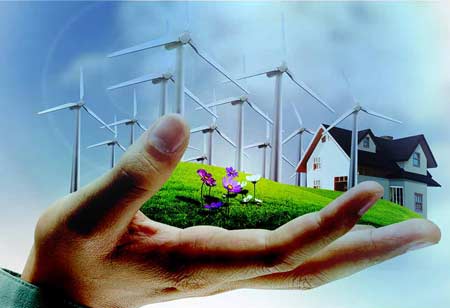Thank you for Subscribing to Energy Business Review Weekly Brief
Significance of Sensors For Utilities to Oversee Energy Distribution
The power sector has been experiencing many latest developments, revived interest in research

By
Energy Business Review | Saturday, January 01, 2022
Stay ahead of the industry with exclusive feature stories on the top companies, expert insights and the latest news delivered straight to your inbox. Subscribe today.
The utility distribution network brings new energy management systems perspectives with smart sensor technology.
FREMONT, CA: The power sector has been experiencing many latest developments, revived interest in research and development, and led to important socio-economic and non-tangible advantages.
A smart & intelligent power generation, distribution, and control system, the smart grid needs numerous communication systems to fulfill its requirements. The ability to communicate seamlessly across different networks and domains is an open issue yet to be correctly addressed in smart grid architectures.
Additionally, increased awareness of the environmental impact and carbon footprint from all energy sources and electricity generation has impeded renewable and alternate energy development and adoption. The second important development that influences the electrical power sector is the advent of energy system deregulation and the shift away from the vertically integrated utility business model.
The rise in the smart grid is a boon for society and all those involved in the power industry. Sensors' key feature is obtaining information on the substation yard from energy machinery. The main advantages are wide frequency bandwidth, high precision, and broad dynamic range. Moreover, these new sensors implement surveillance and control.
Technological progression, deployment of sophisticated protective devices, computing, sensor penetration, communications facility, and automation used by distribution utilities vary widely. The distribution network systems are shifting substantially from analog devices to digital.
Furthermore, it is hard to justify large investments in modernization and digital controls in many distribution systems due to customer density on circuits, circuit settings, and component age. Therefore, there is a chance to refine the reliability and resilience of the distribution systems with the inclusion of modern technologies.
The second-gen of technology for distribution automation has been started very recently. Over the last decade, Outage Management Systems (OMS) has been implemented, providing higher visibility in distribution circuits and supporting operators in making restoration choices. Also, some utilities have introduced sophisticated automation systems to find faults, isolate faulty sections, and automatically restore the remaining areas to service.
These systems are cost-effective, akin to first-gen automation systems, only in regions with elevated client density per mile of line and overhead lines exposed to environmental circumstances that reduce reliability and impair recovery. Nevertheless, these second-generation technologies are improbable to be deployed in lower-density rural areas, as the potential gains don't normally justify the growing costs.
In Contrast to transmission systems, which have a better deployment of sensors, Thus provide operators with a much stronger consciousness of system behavior and operation. Generally, local distribution utilities only track circuit breaker status and evaluate feeder current and voltage as they leave the substation and not at other places on the circuit.
Although this surveillance level is unusual, some utilities installed automation sensing and faulted current indicators separately. Hence, most distribution utilities depend on client calls to support locating faults. Furthermore, utilities without a distribution substation SCADA use client calls in rudimentary instances to report outages and restore and repair immediate service.
The combination of high precision voltage sensors in the distribution scheme allows utilities to efficiently satisfy these reliability and power quality requirements, offering the information required to make critical grid choices and changes. Moreover, installing metering class sensors on a recloser can help optimize the recloser's flexibility and implementation versatility. This enables utilities to enhance grid reliability, resilience, and energy quality and decrease peak demand, losses in distribution lines, and carbon emissions.






